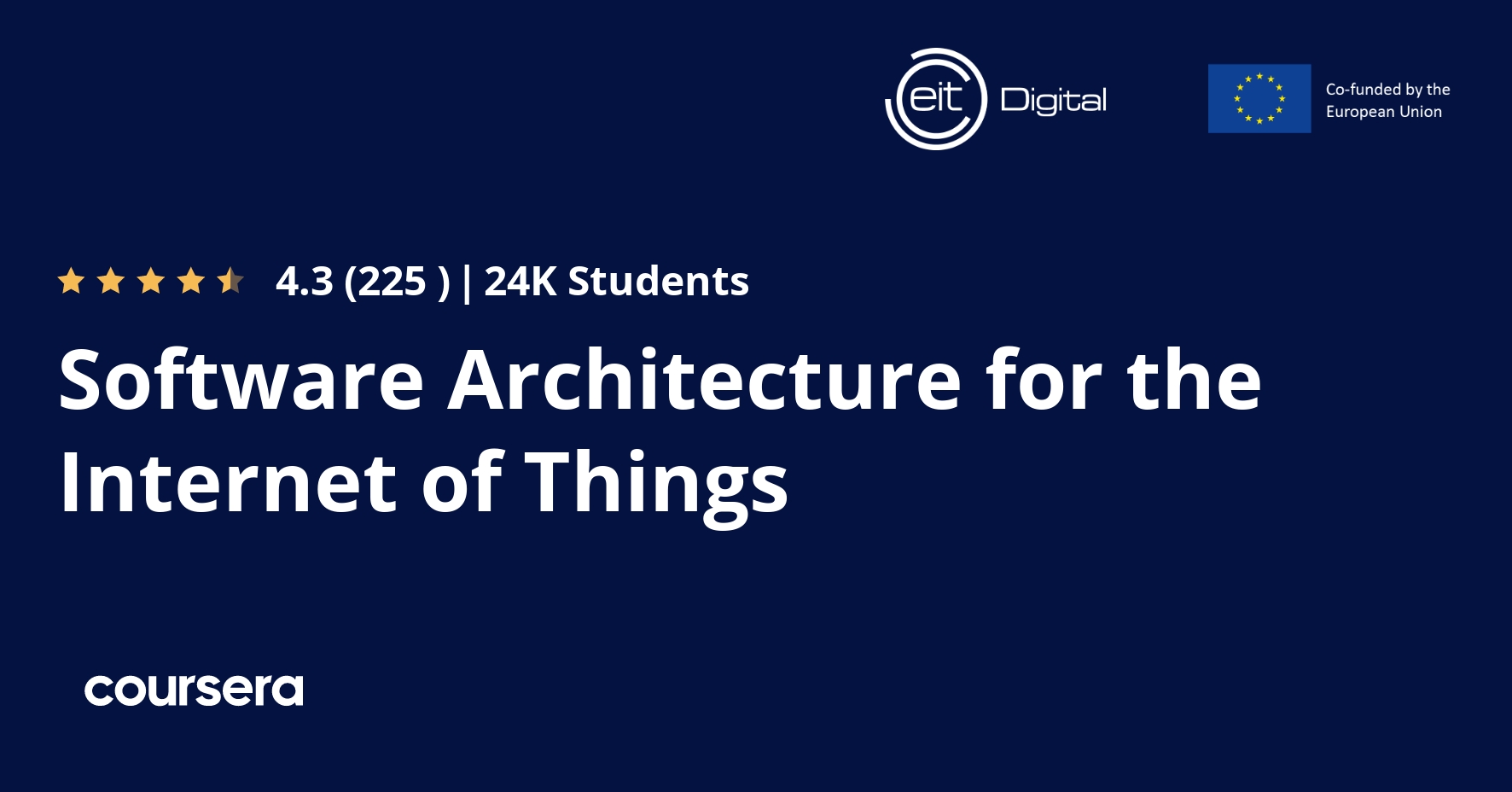Description
This course will teach you how to design futureproof systems that meet the requirements of IoT systems: systems that are secure, interoperable, modifiable, and scalable. Moreover, you’ll learn to apply best-in-class software architecture methods to help you design complex IoT and other applications. Lastly, you’ll come to understand the business impact of the technical decisions that you make as an IoT system architect.
You’ll learn all about software architecture in the next 5 weeks! In the first week, you’ll discover why having a well-designed architecture is important and which challenges you might come across while developing your architecture. By the end of the second week, you’ll already be able to write your own requirements! In the third and fourth weeks, you will learn how to correctly write quality attributes and quality attribute scenarios for a specific case. In the last week, you’ll learn to describe your own patterns and tactics and see how they’re used in an Android framework.
What you will learn
Getting to know Software Architecture
This module will introduce you to the world of software architecture. We’ll define what SA actually is, why it is important and talk about some of the challenges faced in modern Software Engineering. This course is also part of a Blended Master Programme in Internet of Things through Embedded Systems.
Design process and software requirements
Creating good software starts with a solid understanding of the requirements that will have an influence on the software. In this module, we will discuss both functional and non-functional requirements, such as quality attributes, business requirements and constraints.
Quality Attributes
Up till now, we have been talking about quality in an informal way. However, if you want to build systems that support the required qualities you will need a way to express those quality attributes and understand how you can achieve them. After this module you should be able to formulate your own quality requirements. We will also study 2 qualities that are especially relevant for Internet of Things: interoperability and modifiability.
Tactics
In the fourth week, we will explain how architectural tactics can help you create a software architecture that achieves the predefined requirements. This is what needs to be done in step three of the ADD – remember? We’ll start of by learning about the difference between tactics and patterns. We will give some examples of tactics to achieve interoperability and modifiability. We will discuss the MVC pattern and its relation to the modifiability tactics. Lastly, we’ll discuss how MVC is being used in Android.







